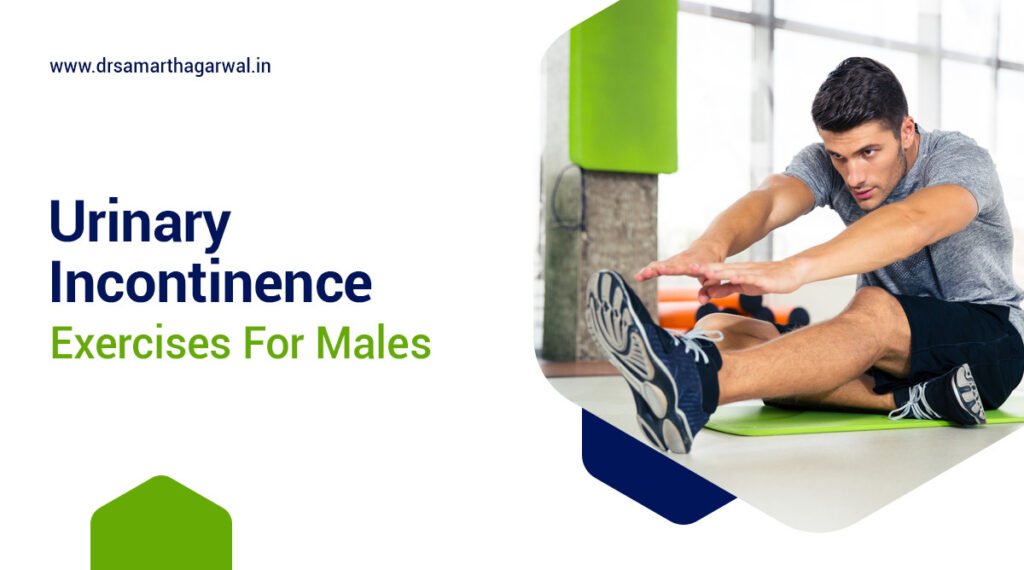Urinary dribbling is a condition that can lead to significant discomfort and embarrassment, impacting individuals at different stages of life. A comprehensive understanding of this condition entails examining its causes, symptoms, and risk factors, along with recognizing when it is appropriate to seek guidance from a healthcare professional. This article provides a detailed overview of urinary dribbling, covering aspects from diagnosis to treatment options such as medications and pelvic floor exercises, thereby equipping individuals with the knowledge necessary for effective management and prevention of this condition.
What is Urinary Dribbling?
Urinary dribbling, often referred to as post-micturition dribble, is a condition characterized by the involuntary loss of urine following urination. This phenomenon can be particularly distressing for individuals, leading to embarrassment and affecting their overall quality of life.
It primarily affects men, especially those dealing with prostate health problems, and can be a sign of underlying urinary incontinence. Understanding urinary dribbling is crucial for patients seeking treatment options, and Dr. Samarth Agarwal emphasizes the importance of consulting a healthcare provider for effective management.
What are the Causes of Urinary Dribbling?
The causes of urinary dribbling can vary widely, and they often stem from issues related to the prostate, pelvic muscles, or neurological damage. Understanding these diverse factors is crucial for proper diagnosis and treatment. For instance, anatomical abnormalities, such as enlarged prostate glands, can obstruct normal urinary flow, leading to leakage. Paralysis or neuropathy may also contribute to the loss of voluntary control over urination, affecting the signals between the brain and bladder.
Additionally,
- certain medications, like diuretics
- muscle relaxants
- and specific antidepressants
can influence bladder function, making awareness of pharmaceutical effects essential in managing this condition.
It’s important to consider the overall health of the individual as well; underlying conditions, such as diabetes or multiple sclerosis, may deteriorate bladder function, further complicating the issue.
Collateral effects of aging can also play a significant role, as pelvic floor muscles naturally weaken over time. Understanding the multifaceted nature of urinary dribbling allows healthcare providers to develop more effective strategies for intervention and support.
Each of these factors contributes to the complex landscape of urinary incontinence, necessitating tailored solutions for each patient.
What are the Symptoms of Urinary Dribbling?
Symptoms of urinary dribbling can include urgency, frequency, hesitancy, and the involuntary loss of urine after urination, often leading to considerable embarrassment for those affected.
Individuals may find themselves constantly worried about potential leakage, which may further impact their lifestyle and self-esteem. Recognizing these symptoms is crucial for seeking appropriate medical help.
When Should You See a Doctor?
If you experience symptoms of urinary dribbling such as frequent involuntary urine loss or significant embarrassment during daily activities, it is essential to seek the advice of a healthcare provider.
Ignoring these signs can lead to worsening conditions, including potential urinary tract infections or more serious bladder issues. Patients should pay attention to specific indicators that prompt immediate medical consultation, such as:
- Noticing a sudden increase in the frequency of dribbling episodes
- Experiencing pain or discomfort during urination
- Finding it difficult to control urination when laughing, sneezing, or exercising
- Noticing changes in urine color or odor
Taking these symptoms seriously, along with addressing concerns about urinary dribbling, offers a pathway to targeted diagnosis and appropriate treatment, enabling individuals to enhance their overall well-being.
What are the Risk Factors for Urinary Dribbling?
Risk factors for urinary dribbling include age, particularly among older men, as well as conditions affecting the pelvic floor and prostate health. Understanding these factors is essential in addressing the challenge of incontinence, as both the physical and psychological impacts can be significant. Individuals may find that their age plays a critical role, with older adults facing a higher prevalence of this issue. Women, especially post-menopausal individuals, also face unique risks associated with hormonal changes that affect bladder control.
In addition, several health conditions, such as diabetes and heart disease, can exacerbate symptoms of urinary dribbling.
Along with age and gender, lifestyle choices—such as alcohol consumption, smoking, and obesity—can be critical in understanding the complete picture.
- Regular exercise may strengthen pelvic muscles, while maintaining a healthy weight can reduce pressure on the bladder.
- Likewise, d dietary habits can play a role; excessive caffeine intake may irritate the bladder and worsen urinary symptoms.
Addressing these various elements allows for a comprehensive approach to treatment, enhancing the quality of life for those affected.
How is Urinary Dribbling Diagnosed?
Diagnosing urinary dribbling typically involves a thorough evaluation by a healthcare provider, who will assess symptoms, review medical history, and may conduct a prostate examination along with other relevant tests. This comprehensive approach allows for accurate identification of underlying issues contributing to urinary incontinence, leading to appropriate treatment options.
Plus the initial assessment, several diagnostic tests may be recommended to further pinpoint the cause of the issue. These tests could include:
- Urinalysis: A simple test to check for infection or other abnormalities in the urine.
- Urodynamic studies: These tests measure how well the bladder and urethra are storing and releasing urine.
- Imaging tests: Techniques such as ultrasound or MRI may be employed to visualize any structural issues.
A healthcare provider may discuss the patient’s fluid intake habits and conduct a physical examination to ascertain any underlying medical conditions. Consulting with a specialist, like a urologist, can ensure that diagnostic accuracy is achieved, paving the way for effective management of urinary dribbling.
What are the Treatment Options for Urinary Dribbling?
Treatment options for urinary dribbling encompass a range of methods, including medications, pelvic floor exercises, behavioral techniques, and, in some cases, surgery. These options aim to improve bladder control and reduce involuntary leakage, helping individuals regain confidence and quality of life.
Each patient’s treatment plan should be tailored to their specific needs for optimal outcomes.
Medications
Medications prescribed for urinary dribbling aim to target symptoms and improve bladder control, but they may come with potential side effects that should be considered. Consultation with a healthcare provider is essential to determine the most suitable options based on individual health profiles.
Several types of medications are available for managing urinary dribbling, each with distinct mechanisms of action.
- Anticholinergics, such as oxybutynin and tolterodine, work by blocking acetylcholine receptors, thereby reducing bladder contractions and increasing capacity. These drugs often lead to significant improvement in symptoms, though users may experience side effects like dry mouth and dizziness.
- Beta-3 agonists, like mirabegron, help relax the bladder muscle, enhancing its ability to hold urine. While these medications have fewer anticholinergic effects, they can sometimes cause elevated blood pressure.
- Topical estrogen therapy is beneficial for women experiencing bladder issues post-menopause, as it improves overall bladder function by promoting tissue health.
It’s vital for individuals to weigh the benefits against potential side effects and share any health concerns with their providers to choose the most effective treatment.
Pelvic Floor Exercises
Pelvic floor exercises are a highly effective treatment option for urinary dribbling, focusing on strengthening the pelvic muscles to improve bladder control.
Incorporating various types of pelvic floor exercises, such as Kegel exercises, can greatly enhance muscle tone and functionality. These exercises involve repetitive contractions and relaxations of the pelvic muscles, further aiding individuals in gaining control over their bladder. Benefits of this consistent practice include:
- Increased awareness of pelvic floor muscles
- Improved bladder control and reduced urgency
- Enhanced overall pelvic stability
It’s essential to perform these exercises regularly and correctly to ensure maximum effectiveness. Establishing a routine not only fosters better results but also contributes to a heightened sense of confidence and quality of life.
Behavioral Techniques
Behavioral techniques, including lifestyle changes and bladder training, can significantly help manage urinary dribbling by promoting better bladder habits. Addressing issues like constipation can also be beneficial. These methods not only assist in reducing symptoms but also enable individuals to take control of their condition.
Incorporating a combination of techniques can lead to improved outcomes. First, it is essential to understand that consistent bladder training schedules can help in retraining the bladder to hold urine for longer durations. Patients should consider documenting their fluid intake and urinary habits to identify triggers for dribbling, such as Post-Micturition Dribble, and thereby adjust their strategies accordingly.
- Fluid management: Limiting caffeine and alcohol can reduce urgency and frequency.
- Kegel exercises: Strengthening pelvic floor muscles offers additional support to the bladder.
- Scheduled voiding: Establishing a regular routine can reduce unexpected leaks.
Patient education is critical; understanding the various methods allows individuals to make informed decisions about their care. Emphasizing lifestyle adjustments can foster a more proactive approach, ultimately enhancing overall quality of life for those affected by this issue.
Surgery
In some cases, surgical intervention may be considered as a treatment option for urinary dribbling, particularly if non-surgical methods have proven ineffective. A healthcare provider, such as Dr. Samarth Agarwal from Siliguri, can assess the appropriateness of surgical solutions based on the individual’s specific condition and prostate health.
When contemplating surgery, several options are available, each suited for varying underlying issues. For instance, a prostatectomy might be recommended for patients with significant prostate enlargement contributing to dribbling or Post-Micturition issues. Another procedure, known as sling surgery, involves placing a mesh tape under the urethra to help control leaks. Other choices include:
- Artificial urinary sphincter implantation, effective for severe incontinence cases.
- Bladder neck suspension, aimed at helping restore normal urinary function.
- InterStim therapy, which utilizes nerve stimulation to enhance bladder control.
Outcomes from these surgical interventions can vary but often result in improved quality of life, reducing episodes of dribbling, and enhancing overall urinary function. The decision to proceed with surgery should always be made in close consultation with a healthcare professional, considering both the benefits and potential risks involved.
Preventing Urinary Dribbling
Preventing urinary dribbling involves proactive measures, such as maintaining a healthy weight, avoiding irritating foods and drinks, and practicing good bathroom habits. Addressing related health issues like erectile dysfunction can also play a role. By adopting these strategies, individuals can minimize the risk of developing urinary incontinence and improve overall bladder health.
Maintain a Healthy Weight
Maintaining a healthy weight is crucial in preventing urinary dribbling, as excess weight can put added pressure on the bladder and pelvic floor muscles. This lifestyle change can significantly reduce the risk of experiencing involuntary urine loss and promote better overall urinary health.
In fact, studies show that individuals who manage their weight effectively often report improved bladder function and fewer related health issues. Proper weight management not only alleviates pressure but also enhances muscle strength in the pelvic area, contributing to a more controlled urinary function.
To achieve effective weight management, consider the following tips:
- Adopt a balanced diet rich in whole foods, including fruits, vegetables, and lean proteins.
- Engage in regular physical activity, targeting both cardiovascular and strength training exercises.
- Stay hydrated with sufficient water intake, aiding in digestion and overall body function.
- Monitor portion sizes to avoid overeating, which can lead to weight gain.
By incorporating these strategies into daily routines, one can maintain a healthy weight and support their urinary health significantly.
Avoid Irritating Foods and Drinks
Avoiding irritating foods and drinks can play a significant role in preventing urinary dribbling, as certain substances may exacerbate symptoms of urinary incontinence. Identifying and eliminating these triggers can lead to improved bladder control and comfort.
Making conscious dietary changes is essential for maintaining a healthy bladder. Common irritants include caffeine, alcohol, spicy foods, and artificial sweeteners. These items can lead to increased urgency and frequency of urination, ultimately contributing to discomfort and leakage. By replacing these foods with more bladder-friendly options, individuals can significantly enhance their urinary health.
- Consider strongly limiting consumption of caffeinated beverages like coffee and soda.
- Opt for herbal teas as a soothing alternative.
- Incorporate fruits and vegetables that are low in acidity, such as bananas and cucumbers.
Hydration plays a crucial role; drinking adequate water helps flush toxins from the bladder, so balancing intake is vital. Striving for these dietary adjustments can foster better urinary function and overall well-being, encouraging a lifestyle with reduced irritants and greater comfort.
Improved bladder control is within reach for those willing to adapt their eating habits.
Practice Good Bathroom Habits
Practicing good bathroom habits is essential in the prevention of urinary dribbling, as establishing a consistent schedule can help train the bladder to function more effectively. Adopting these habits contributes to better bladder control and reduces the risk of involuntary urine loss.
By implementing a structured routine, individuals can optimize their bathroom visits, enhancing comfort and confidence. This structure often includes:
- Setting specific times for bathroom breaks, ideally every 2 to 4 hours, to condition the bladder.
- Avoiding excessive fluid intake, particularly of caffeine and alcohol, which can irritate the bladder and increase urgency.
- Practicing relaxation techniques to reduce anxiety during bathroom visits, helping with overall bladder function.
Plus these habits, maintaining hydration is equally important, as it ensures proper kidney function while helping to dilute urine, rendering it less irritating.
Paying attention to body signals and responding promptly, rather than delaying, can significantly improve bladder health and contribute to overall well-being.

Contact Dr. Samarth Agarwal if you have any questions or concerns about your Urinary health!






